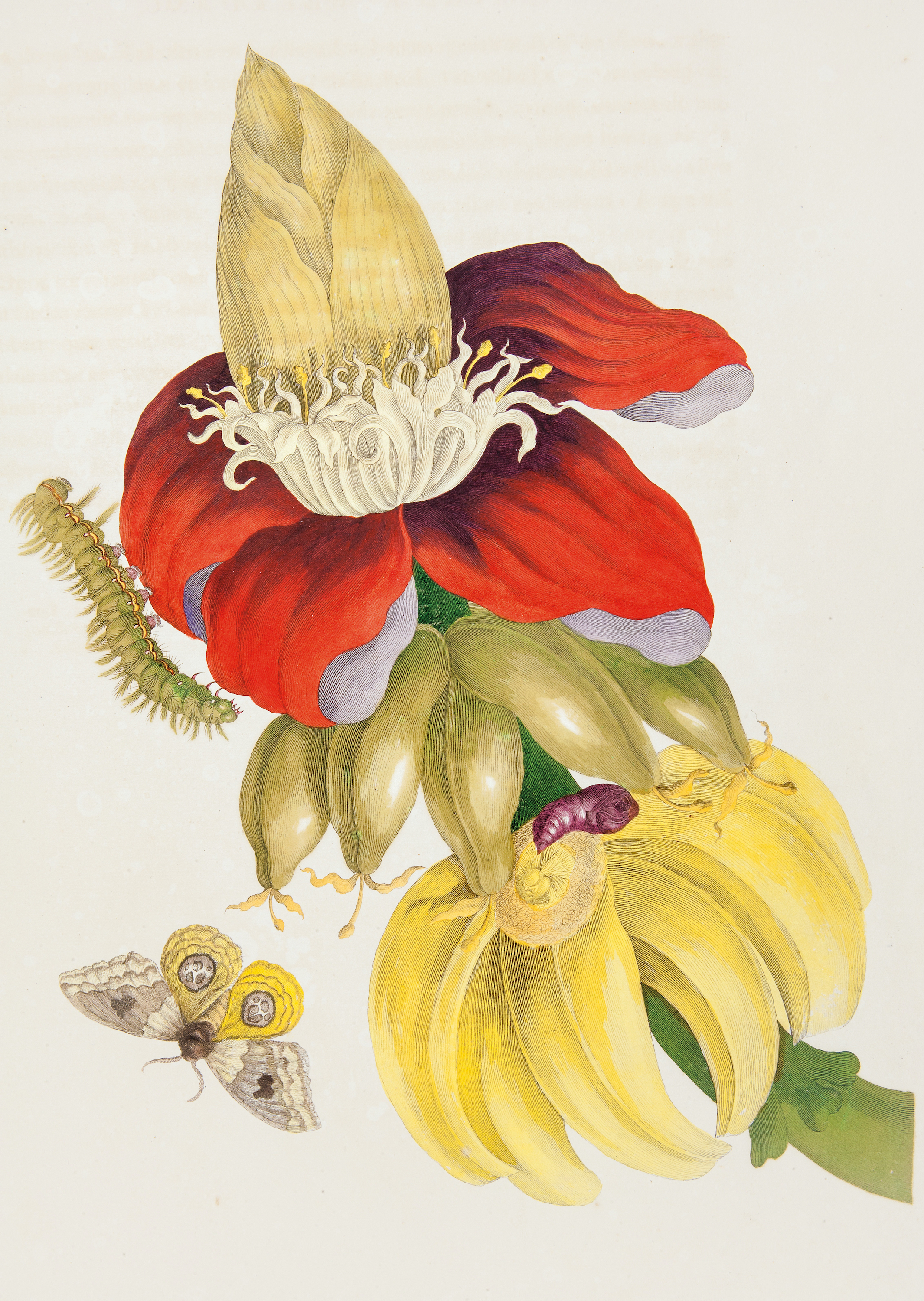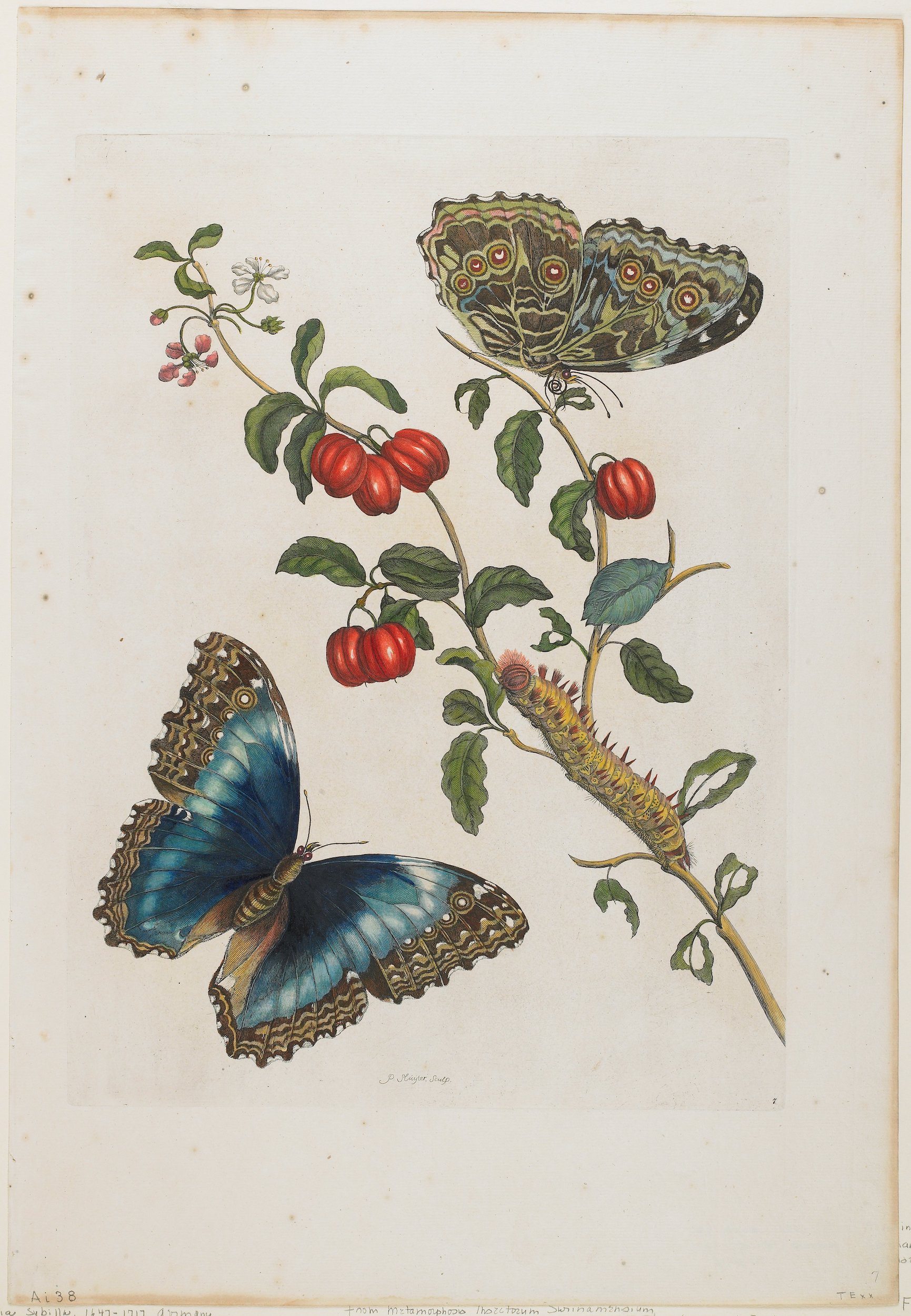In the 17th century few Europeans would have had the chance to taste a banana. Maria Sibylla Merian described its properties by association: "it is used like an apple and likewise has a pleasant aroma, it is good to eat both raw and cooked, it has a thick skin like a lemon…" In her illustration, she depicts a huge inflorescence bearing male flowers, the red-orange bracts and budding female flowers, and the ripe fruits.
In 1699 Maria Sibylla Merian (1647–1717) and her daughter Dorothea Maria Graff travelled to Surinam to study the insects there and document their appearance. Though their self-financed expedition had been planned to take five years, in 1701 Merian returned to Amsterdam and set about altering her field sketches to prepare them for prints; thereafter, three copperplate engravers made the plates. Thanks to her contacts among Dutch naturalists, twelve subscribers financed the publication of a luxury, hand-colored edition of the work. Merian’s observations of live insects enabled her to document their appearance at various stages of their development and in their interactions with other animals. Metamorphosis insectorum Surinamensium is not an exclusively entomological work; Merian and Graff also studied and recorded Amazonian jungle flora, arachnids, amphibians, reptiles, and small birds.
At the ongoing exhibition “Plants and animals. Natural history atlases in the era of Linnaeus” in the Museum of King Jan III's Palace at Wilanów you have a unique opportunity to see four copies of Metamorphosis insectorum Surinamensium.
Maria Sybilla Merian is one of the women artists featured in our Women Artists Notebook. Check it out here!
P.S. Here you can get to know more about art of botanical illustration.


 Pieter Sluyter after Maria Sibylla Merian
Pieter Sluyter after Maria Sibylla Merian